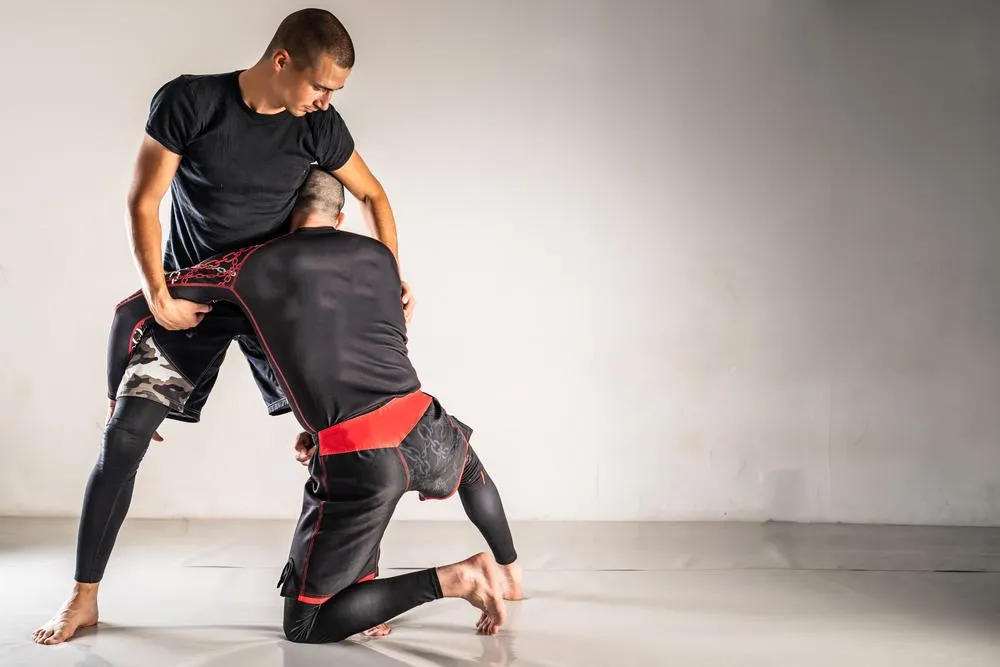
Managing Sports Injury Recovery in MMA and BJJ Athletes
Combat sports such as MMA and Brazilian Jiu-Jitsu (BJJ) require a mix of power, flexibility, and endurance that few other activities demand. Grappling, takedowns, and ground control put tremendous stress on the body, especially on the posterior chain, which includes the muscles and joints that support every explosive movement. Effective sports injury recovery is essential not just for getting back on the mats but for maintaining longevity in the sport.
The Hidden Cost of Grappling on the Body
The constant torque and impact from training and sparring take a toll over time. Ground-based movements often strain the lower back, hips, and hamstrings, while clinching and submission holds can cause microtears that weaken connective tissue. Many athletes treat this pain as part of the process, pushing through discomfort and delaying proper recovery.
However, repeated strain without adequate healing can lead to chronic tightness, mobility loss, and recurring pain. Smart recovery strategies focus on restoring balance throughout the body, particularly in the posterior chain, so every movement remains strong and efficient.
Why the Posterior Chain Deserves Special Attention
The posterior chain powers nearly every athletic action: shooting for a takedown, defending a sweep, or controlling an opponent from top position. When neglected, weak or imbalanced posterior muscles can shift tension to other joints, increasing the risk of knee or shoulder injuries. For effective sports injury recovery, athletes need to strengthen and maintain this critical muscle group.

Here are key strategies to keep the posterior chain healthy and responsive:
Activate before you load. Include warm-ups like glute bridges, banded walks, and bird dogs to prepare the body for heavy movement.
Train movement patterns, not just muscles. Compound lifts such as Romanian deadlifts and kettlebell swings help develop real-world functional strength.
Recover with purpose. Use therapies such as shockwave therapy to stimulate blood flow and promote cellular repair.
Maintaining a balanced posterior chain helps athletes move efficiently and absorb impact more safely. These preventive measures also shorten recovery time after training, making every session more productive.
Building a Smarter Injury Recovery Routine
Successful sports injury recovery is not just about resting; it’s about restoring the body’s full capacity to move. A structured recovery plan should include physical, nutritional, and mental components to ensure complete regeneration.
Some of the best recovery tools and habits for combat athletes include:
Myofascial release and mobility work to reduce tightness and promote flexibility.
Contrast therapy (alternating heat and cold) to manage swelling and enhance blood circulation.
Nutrition focused on reducing inflammation, emphasizing food such as turmeric, salmon, leafy greens, and berries.
Adequate sleep to support tissue repair and muscle recovery.
Active rest days involving low-intensity movement to maintain circulation and prevent stiffness.
The goal is to treat recovery as part of training itself, not as downtime. Athletes who prioritize these habits find themselves performing better, even during high-intensity weeks. Consistency is what separates short-term relief from long-term resilience.
Chiropractic and Regenerative Care in Injury Recovery
While strength and conditioning programs address the muscular side of recovery, chiropractic and regenerative treatments focus on structural balance and cellular healing. Advanced chiropractic care now goes beyond spinal adjustments, incorporating extremity work and alignment strategies to restore joint integrity. This approach ensures that the entire kinetic chain, from shoulders to ankles, moves in harmony.
Modern athletes are also turning to regenerative treatments, which encourage tissue healing through natural biological processes. These non-invasive methods help repair microdamage in muscles and joints, improve flexibility, and accelerate the body’s ability to heal after hard training sessions.
When combined with mobility training and manual therapy, these interventions form the foundation of a comprehensive sports injury recovery program. The outcome is not only faster recovery but also improved biomechanics and reduced risk of re-injury. Investing in recovery is ultimately an investment in performance longevity.

How to Accelerate Muscle Injury Recovery Naturally
Learning how to accelerate muscle recovery can make a dramatic difference in training quality. Hydration, nutrient timing, and adequate rest play a crucial role in how the body repairs itself after intense exertion. Consuming protein and carbohydrates shortly after training replenishes glycogen and supports tissue rebuilding.
Complementary methods like light stretching, red light therapy, or compression garments can further enhance circulation and reduce delayed-onset muscle soreness. Athletes who monitor their recovery markers, such as heart rate variability and sleep quality, gain insight into when to push harder and when to back off. Recovery science is no longer a luxury; it’s an essential part of performance planning.
Mindset and Recovery Discipline
Recovery is both physical and psychological. The most disciplined athletes treat their downtime as training in itself. Instead of viewing injuries as setbacks, they see them as chances to reset, rebuild, and come back more balanced. Tracking recovery progress, setting realistic goals, and maintaining a positive outlook can all influence how quickly an athlete returns to peak condition.
Adopting this mindset helps combat frustration and prevents reckless training decisions that can worsen injuries. Resilient athletes know that staying consistent with small, daily recovery habits leads to sustainable growth over time.
Returning to the Mats Stronger
At Optimal Health Members, we understand the physical and mental toll of combat sports. Through our specialized sports injury treatment program, we help athletes recover faster and move better using advanced chiropractic methods, soft-tissue therapies, and SoftWave tissue regeneration technology. These treatments are designed to relieve pain, restore balance, and reignite your body’s natural healing potential.
Our team focuses on non-surgical, evidence-based care that reduces inflammation and promotes long-term wellness. Whether you’re managing a nagging shoulder strain or recovering from joint fatigue, we provide the tools to get you back to peak performance safely. Take charge of your recovery. Book a session today.